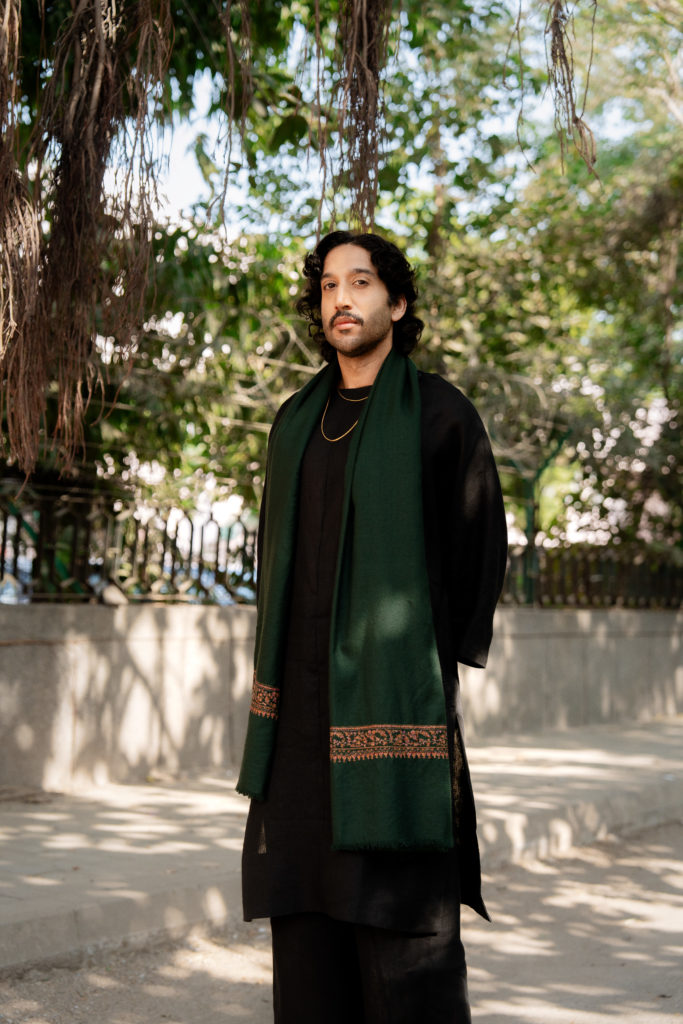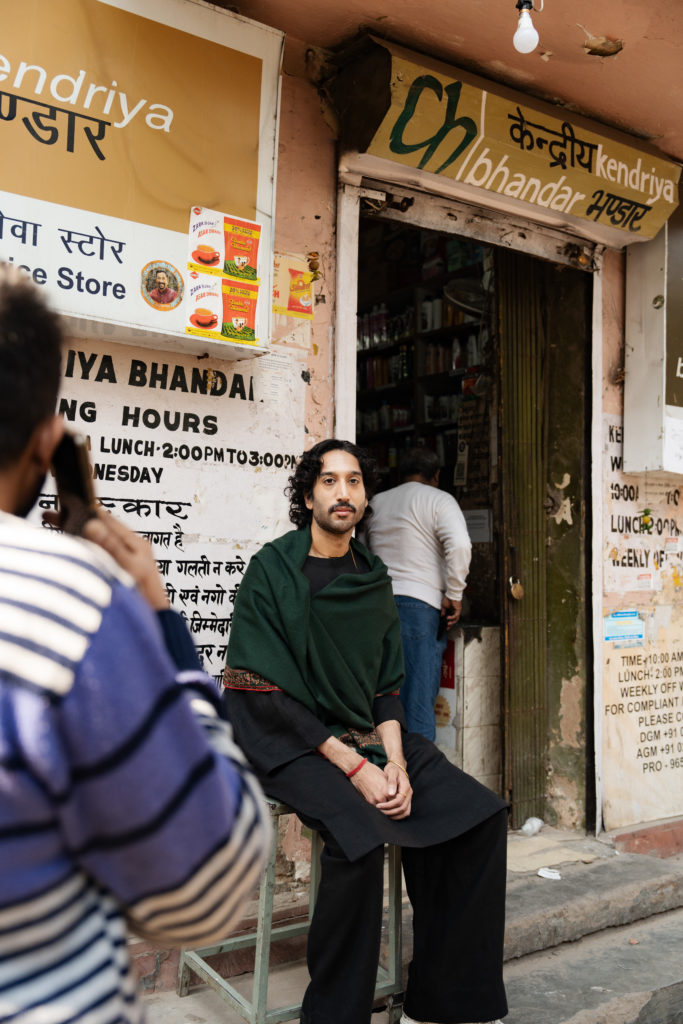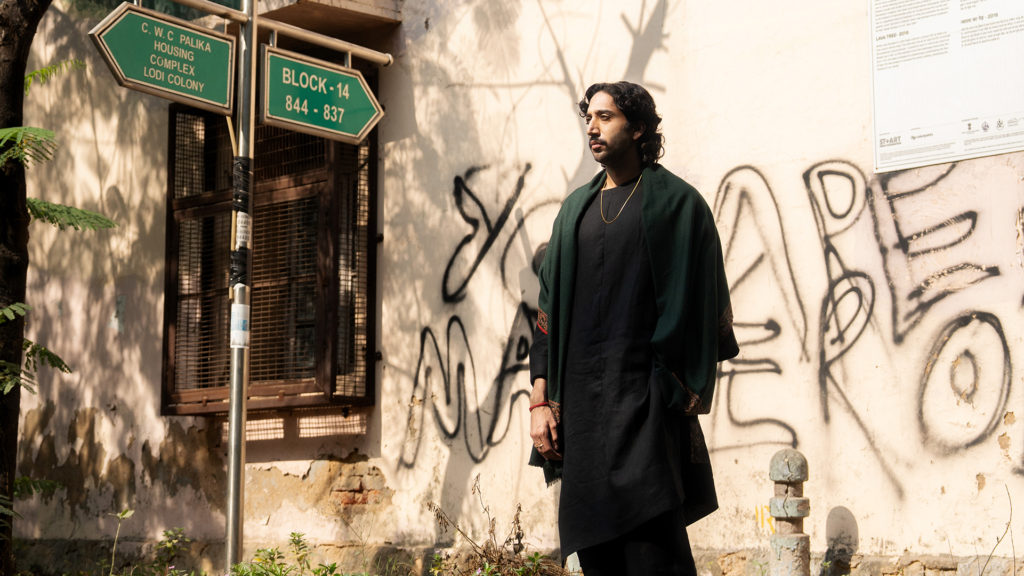Rajiv K Menon : Bridging Culture Through Art
When Rajiv Kannan Menon arrived in Delhi, he brought with him a calming charm. Dressed in Turn Black, paired effortlessly with a green shawl, his style felt as thoughtful as his words. As the founder of Rajiv Menon Contemporary, a Los Angeles-based gallery championing South Asian art, he’s spent the past year creating ripples across the LA art world. With five museum acquisitions in just 12 months, his gallery is becoming a vital hub for cultural exchange—giving South Asian artists and diaspora voices a much-needed platform.
He sat down with us, talking about the journey that led him here. From his days as a PhD student at NYU studying visual culture, to building a space where art becomes a lens for connection and storytelling. With his passion for amplifying South Asian creativity, it’s clear this is just the beginning.

How are you doing? How has your trip to India been?
It’s been great. I got into Delhi yesterday from Jaipur. I was there for the opening at the Jaipur Center for Art at the City Palace. It’s this beautiful marriage of the heritage architecture, in this, obviously an iconic building, the City Palace, with such contemporary work. Now I’m looking forward to my time in Delhi before heading back to the States.
So you’ve been in the States all your life?
Yeah. I grew up mostly in Texas. It was a really interesting place because Houston, where I’m from, is a really global city, a very immigrant-driven city. I grew up in this very quintessentially Texan suburb. So I think I had this whiplash between the two a lot of the time. Plus, we spent a lot of time in India, where I briefly went to school. I was always there visiting my grandparents.
What would you say would be the pivotal moment in your life or in your career which made you decide to start up your gallery?
I think coming to India and really seeing the art scene here, I saw a world that was so globally significant and really in dialogue with a lot of what I was seeing in the US. To me, it felt so patently absurd that there wasn’t a platform on the West Coast to showcase a part of the world that’s one-fifth of the human population, if not more. This is a young country, and if you want insight into what’s happening, and if you believe art is meant to showcase our times, you have to be paying attention to emerging voices. I found one of the strengths is that I can translate some of the more complicated work into more accessible dialogs for audiences that maybe aren’t familiar. So I don’t want the work to be diluted, but I want the work to feel more accessible to people who are maybe walking into the gallery for the first time.
Does it get challenging for you to always label and promote it as South Asian art, and not just art?
This question looms over my head constantly. I don’t want to be pigeonholed. I do imagine as the gallery grows, we will expand our scope above and beyond South Asia. But I think specificity is helpful. I think especially when so much of what you’re looking at has to be contextualized in the place it’s coming from. Part of the problem I’ve seen with a lot of presentations of South Asian work in the US, is that it’s just presented without people who are knowledgeable about where it’s coming from. Whether it’s engaged with our history; if it’s engaged with cultural commentary, you need to know those contexts really well. I really want to be able to bring not only the artwork itself, but a deeper conversation around it so you can build that sense of not just comprehension, but commutership around the work.

You seem to be around the States quite a bit. What made you come to the city of LA, and how has that helped you in establishing what you want to do?
For me, it is really important for art to be in conversation with the wider culture. It can’t just exist in a vacuum, and it can’t just be people speaking to themselves. In LA, I saw this incredible growth around South Asian people who were pushing forward the way we were being seen in culture. But I saw a real absence of engagement with the visual arts in that space. It was necessary to enter a larger conversation that was happening and talk more broadly about the way that Indian culture is in conversation with American culture. Similarly, with music and fashion, there needs to be inherent partnerships because ultimately, again, art has to be part of the culture. LA felt like the right place for that. There’s so many visible and vocal South Asian people who are getting up every day and wanting to promote our culture and our perspectives. And so it really felt like an important location for that regard.
How do you navigate the fine line between cultural representation and the exotification of South Asian art?
It’s something I’m so sensitive to because my training in grad-school was very much in postcolonial theory, and I think these were questions that I was constantly confronted with. For me, if you can provide a sense of deep knowledge around the work, and if you’re really centering the artist’s perspective, their agency, their humanity, that fundamentally resists that impulse towards exotification, which I think is fundamentally dehumanizing. So I actually do think a lot of the time, even folks in the diaspora, consume work as just exotic. It’s just this pretty thing to put in your house. It’s just purely decorative. For me, it’s so important that South Asian art is treated as much more than that. It’s not just a consumer object. It’s not just a commodity. It’s not just a marker of the ‘exotic east’. It’s something with a living story and with a real intervention in its presence in the culture.
India has a long history of art deeply embedded in its culture, but in the modern, post-colonial world, the traditional expectations here—like parents steering their kids towards professions like medicine or engineering— take over. Was it easier for you to foster this cultural movement within the diaspora in the U.S. than within India itself? How do you navigate the unique challenges of bringing this art scene back to India, given the the layers of identity struggles—whether related to caste or other socio-cultural factors—that often come into play here?
I think specifically in the US, so often when you look at immigration, you’re just trying to make your place in the country. That’s why this notion of being a doctor and lawyer becomes important. So for me, I wanted to really stress that art is important. What a boring, dull, miserable world it would be if we weren’t engaging with art. I want them to leave the gallery and realize that art needs to be a part of their life. What ends up happening is when we devalue the arts and we focus on being doctors, lawyers, engineers and prioritize that, the audience becomes weak. They’re not engaging with the work. A weak audience is bad for the culture in general. In the States, I am constantly hearing people talk about how important the culture is, how important representation is, how important visibility is. I want people to put their money where their mouth is. If you really believe that culture is important, engage with the arts and meaningfully show up and challenge yourself. And art is challenging. It’s not just sitting down and watching a TV show. It’s not just going and shopping. Sometimes art can be very humbling and it doesn’t place you necessarily at the center of it.
I wanted to delve a little bit more into who you are. Who are you when you’re not heading your gallery? What do you like doing?
Travel and art are quite interconnected for me. The experience of going to a new place and having to adapt, like re-adjusting and reorienting yourself. My father works in shipping and so my childhood was really characterized by a lot of travel. It was really important for him that I saw the world along with him. Then beyond that I can be kind of a homebody. I find myself because working in galleries is a very social job. So I really enjoy quiet time in LA. I love just spending time at my family home with my family. I read a lot. I sort of just like being when I’m in LA.

So you travel a lot, you have a gallery and I think it’s also very evident that you like styling yourself really well! How do you like to express yourself through your clothes?
I really think about how I can communicate my personality and all of these things play out through the way I dress myself. I think style, silhouette and texture are a way to really convey who you are. I love going to small boutiques or meeting local brands in whichever part of the world I’m in, and in that way my wardrobe really reflects my journeys and becomes like this material evidence of the experiences I’ve had and the places I’ve been. I really love bringing Indian aesthetics to LA. I think I grew up in a sort of way where you would be embarrassed to be seen as foreign. And so I think my peers often wouldn’t wear Indian clothes outside of very specific contexts and I want to push that. I really feel my most comfortable in a kurta. I love being able to just proudly wear it. I think even the work you guys are doing is really pushing Indian aesthetics and showing the world how to dress from our perspective which I really, really love.
The last question would be, as a mentor, what would be the advice you would give to emerging or struggling South Asian artists right now, in a world where representation is still growing?
See everything. Be hungry. Take in as much inspiration as you can and not just from your world. Go and see artists who are from completely different backgrounds. See the way that you might find connections that you wouldn’t expect. But you have to have a truly open mind, I think, to be able to find yourself. You have to be able to be willing to take other people’s perspectives on their terms to then sharpen your own. I love working with artists who are really immersed in art generally, and I struggle when I meet artists who aren’t out seeing other artists’ work. I think that’s kind of a red flag for me. So if I see that situation, that’s my first piece of advice. Go out and see more. And you’ll find your own practice evolving.
Rajiv plans to open a permanent flagship space in Los Angeles in early 2025, making sure that South Asian art has a fixed presence on the West Coast.
Seen here is Rajiv wearing our Linen Tunic and Pants Co-Ord Set.


Leave a Reply